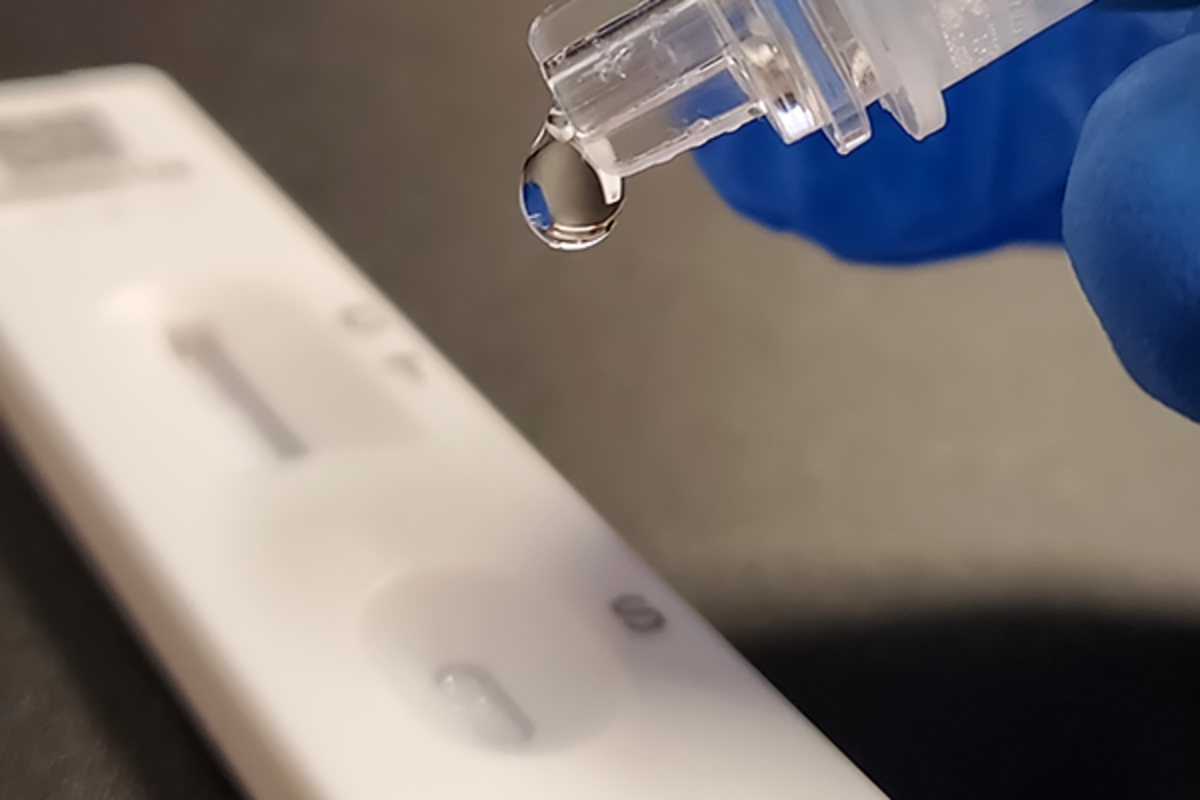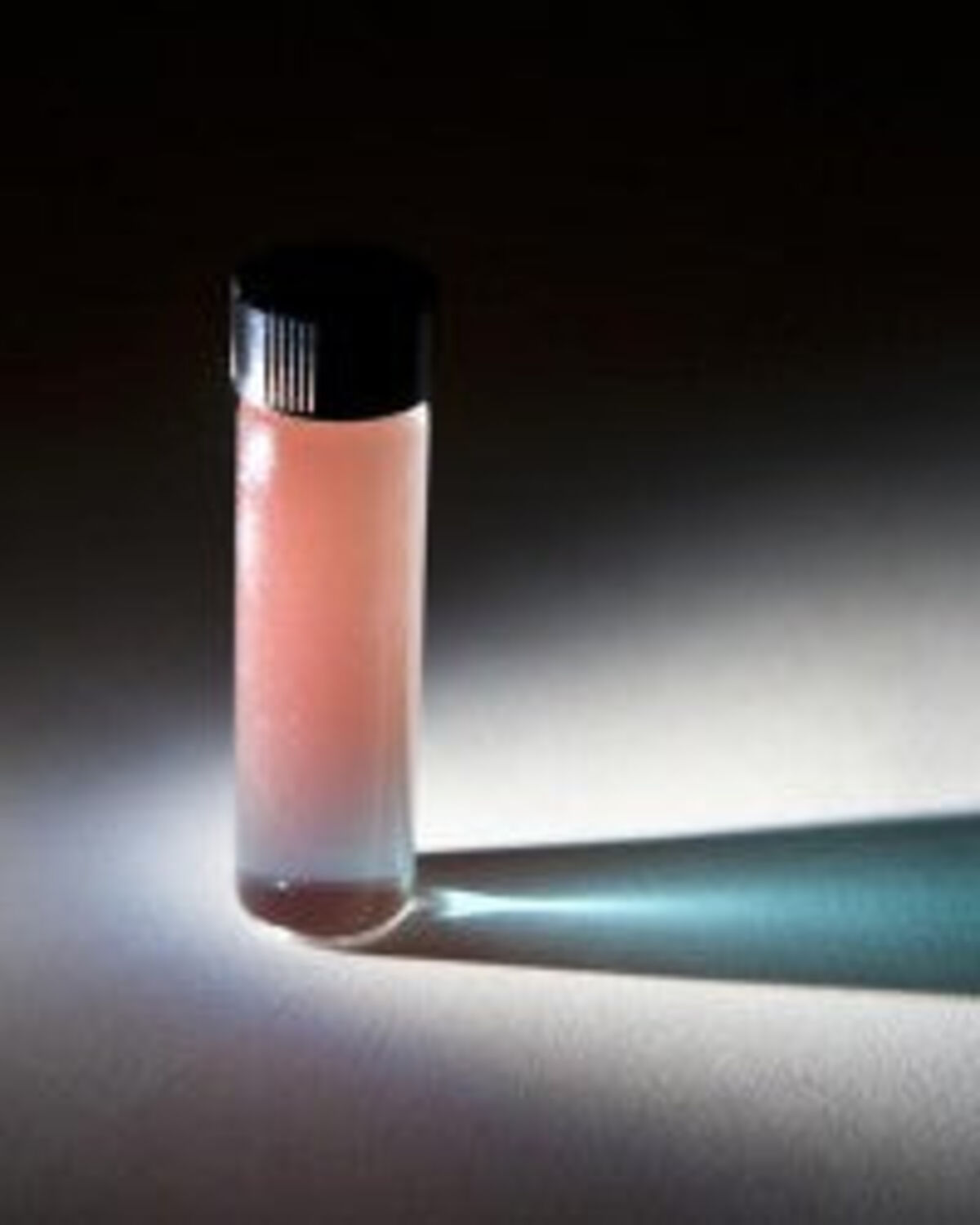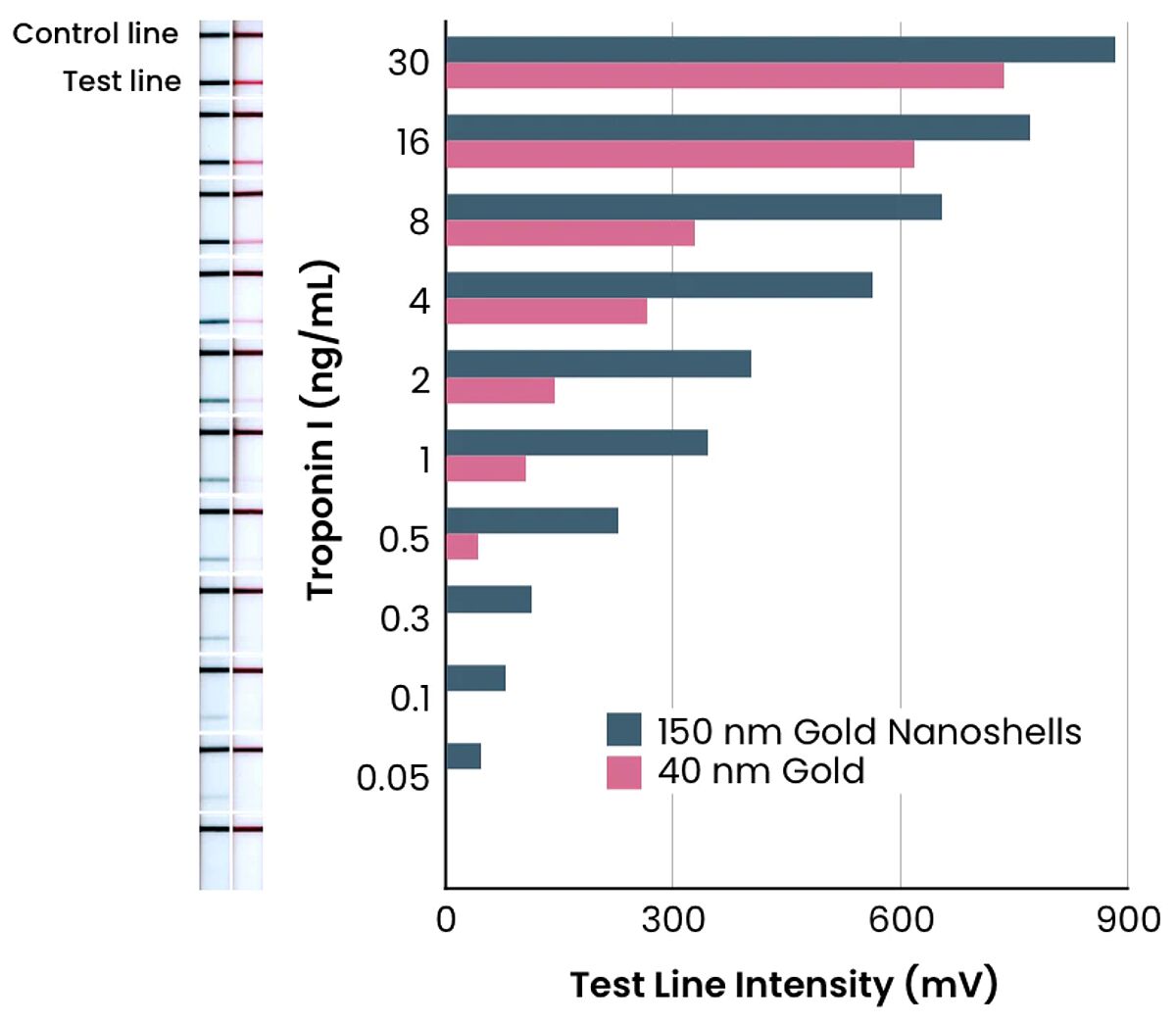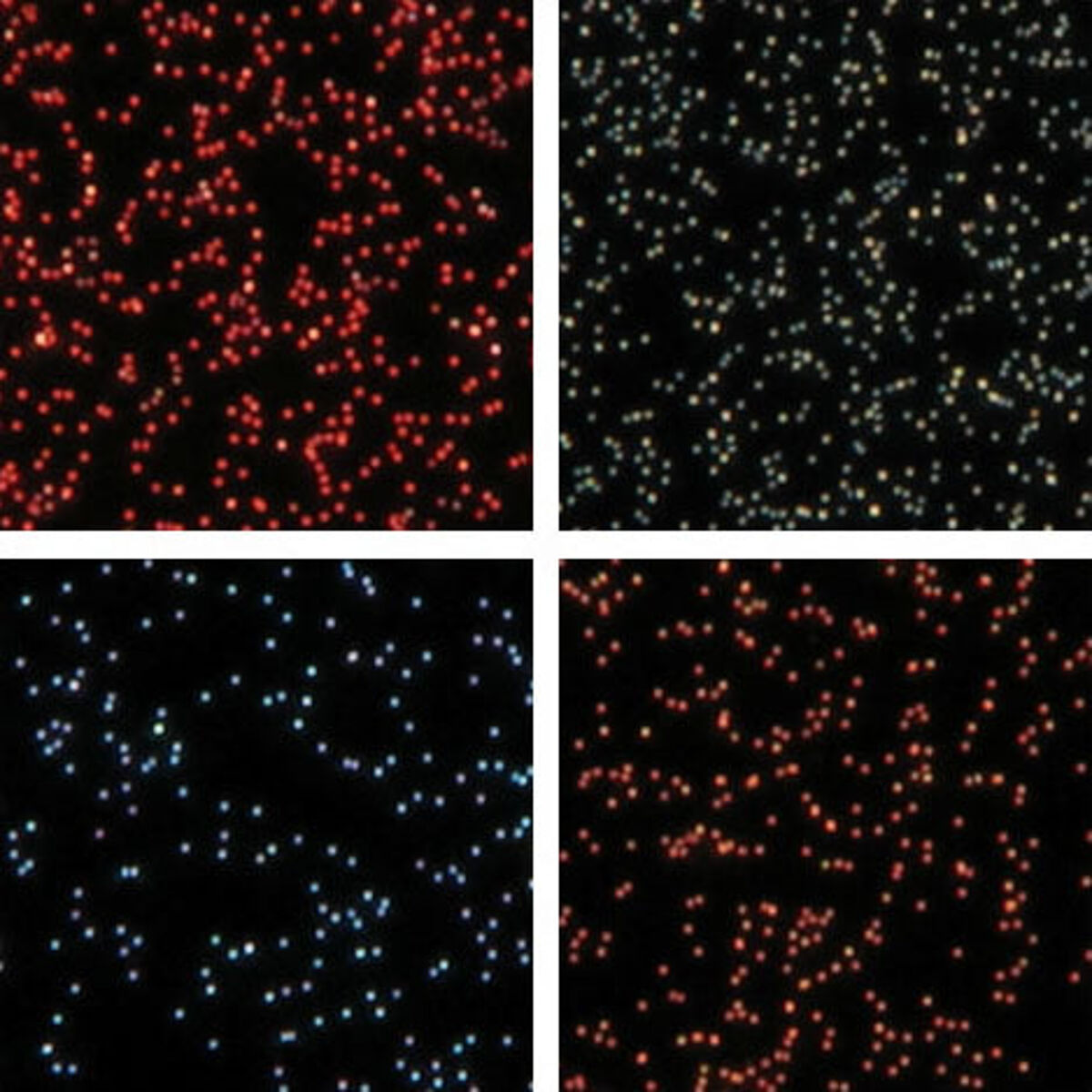Optimizing a lateral flow assay for sensitivity is a challenging, multi-step process. It is highly assay-dependent and reliant on selecting the right control, sandwich antibodies, nanoparticle probes, and conjugation method. A successful diagnostic lateral flow assay is the product of many small optimizations that vary depending on the particle type, target, and system.
Antibodies and other amine-containing biomolecules efficiently bind to Gold Nanoshells using EDC-NHS chemistry to make highly stable conjugates. Gold Nanoshells have been integrated into dozens of lateral flow assay systems, offering a clear advantage in stability, reproducibility, dynamic range, and sensitivity. Colloidal 40 nm gold nanoparticles are the industry standard for use as a probe in many lateral flow tests.

NanoComposix - Fortis Life Sciences has developed a variety of high-quality plasmonic nanoparticles, including 40 nm gold particles and other unique nanoparticles that give rise to increased sensitivity in lateral flow assays. Gold Nanoshells provide an ultrabright label for lateral flow and offer up to 20× increases in lateral flow diagnostic sensitivity over 40 nm gold.
We have extensive expertise in the synthesis, characterization, and surface modification of nanoparticles. For more information check out our handbooks.
The Gold Nanoshell advantage
• Up to a 20× increase in lateral flow diagnostic sensitivity over 40 nm gold nanoparticles
• Combined benefits of gold nanoshell brightness and covalent conjugate stability to help you achieve maximum assay sensitivity
• Unique optical properties of gold nanoshells provide brighter test lines, enabling more sensitive visual detection versus standard colloidal gold
• Available in bulk quantities or as part of a High-Sensitivity Conjugation Kit for ease-of-use
Gold Nanoshells for maximizing visual detection sensitivity
Gold Nanoshells can deliver 6–20× greater sensitivity in lateral flow assays compared to 40 nm diameter gold colloid. Nanoshells are plasmonic reporter nanoparticles consisting of a silica core coated with a thin (~15 nm) shell of gold. They are available in a 150 nm size for covalent conjugation. NanoComposix also offers traditional 40 nm and 80 nm gold nanospheres, with options for passive and covalent conjugation.
Comparison
Comparison of test line intensity for 7 positive samples when run on a commercially available COVID antigen test using dyed colloidal particles versus a nanoComposix COVID antigen test using 150 nm Nanoshells.
What are Gold Nanoshells: What are their properties?
Gold nanoshells are surface plasmon resonant (SPR) nanoparticles consisting of a nanoscale silica core surrounded by an ultra-thin gold shell. Changing the ratio of the core diameter and the shell thickness tunes the absorption and scattering properties of the nanoshells across the visible and near-IR (NIR) regions of the electromagnetic spectrum. Increasing the size of the silica core, and decreasing the thickness of the gold shell cause the plasmon resonance to shift toward the NIR.

This class of plasmonic nanoparticles has a wide variety of applications, including uses in optical filters, sensing and cancer therapy. For example, one of our most popular nanoshells products has a strong plasmon resonance at 800 nm and the very high absorption in the NIR is the basis for therapies that utilize the localized heating of nanoparticles to eradicate cancer cells. Further tuning of the nanoshell size results in particles that scatter different portions of the spectrum, which can be readily observed using dark field microscopy (see image right). The tunable plasmonic properties make nanoshells of interest for Surface Enhanced Raman Scattering (SERS) applications, or as optical sensors where a shift in color of the nanoshell is indicative of the presence of a target analyte in solution.

Due to the difference in the scattering and absorption properties of the nanoshells, many variants are bichromic: for example, when a solution of 800 nm-resonant nanoshells are viewed in transmission (back lit) the nanoshells solution appears blue, but when viewed with reflected light the same solution can appear a rusty red due to scattering by the particles.
Gold Nanoshells resonant at 660–980 nm and are available with either polyethylene glycol (PEG) or polyvinylpyrollidone (PVP) capping agents, or in a dried formulation.
Particles with other optical properties, core/shell dimensions, or different surface capping agents are available on request. Contact us for more information about our custom fabrication abilities.

NanoComposix - Nanoparticles for research, development and commercialization
Assay development, Plasmonics, Diagnostics, Biosensors, Drug Delivrey and Custom Nanomaterials
Ressources
Handbook - Lateral Flow Assay Development Guide
Our handbook is a detailed guide designed to help you maximize the performance of lateral flow assays when using nanoComposix nanoparticles. Learn about the following:
- Step-by-step guide to assay design process
- Protocols and material selection advice
- Tips for enhancing specificity and sensitivity
- Assay Formats
- Nanoparticle probes
- Preliminary considerations
- Design, materials, and protocols
- Troubleshooting
Handbook - Development of Lateral Flow Assays using Gold Nanoparticles and Nanoshells
Download this new compendium of recently published articles to see how these innovative reporter particles support a wide range of applications including assays for infectious diseases, biomarkers of disease, and food borne pathogens.
Our new compendium of peer-reviewed publications describes how gold nanoparticles and nanoshells from Fortis deliver advantages in stability, reproducibility, dynamic range, and sensitivity.
Infectious Disease
- Improvements to the sensitivity and specificity of point-of-care SARS-CoV-2 antigen tests
- Detection and characterization of neutralizing antibodies to SARS-CoV-2
- Development of a highly sensitive and specific assays for river blindness
Biomarkers
- Quantification of total prostate-specific antigen from a drop of serum within 20 minutes
- Detection of markers for ovarian cancer recurrence and monitoring early responses to therapy
- Monitoring of dopamine levels in neurodegenerative diseases for early diagnosis and treatment monitoring
Food Borne Pathogens
- Development of a highly sensitive and specific assay for detection of classical and new staphylococcal enterotoxins
- Detection of fumonisins in maize which cause substantial economic losses and potential health risks




